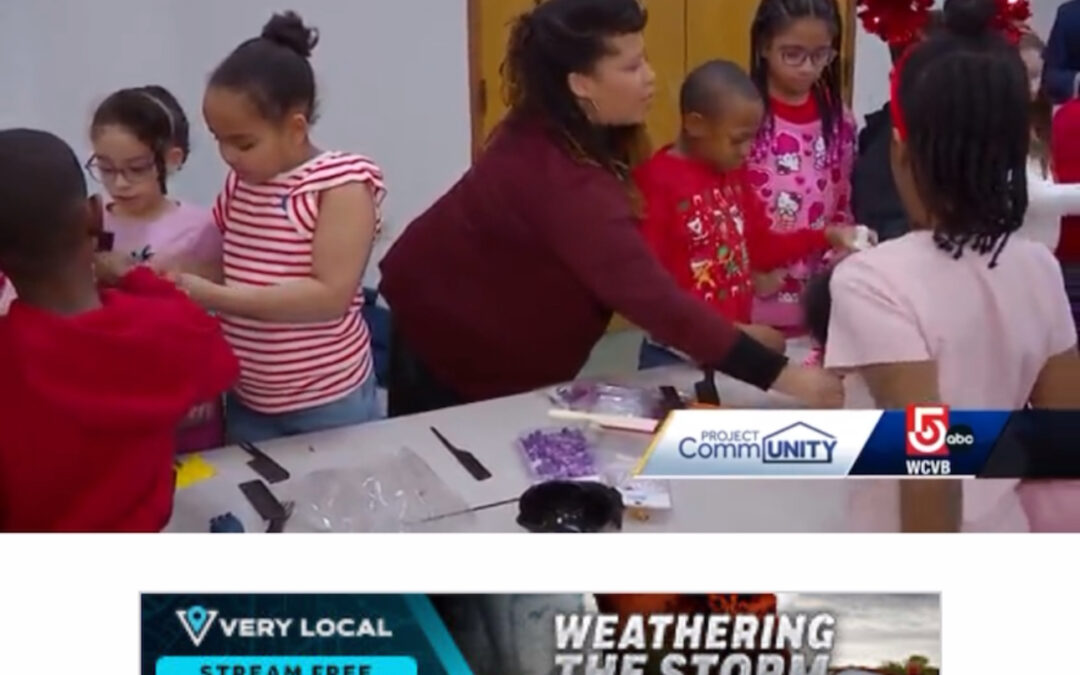
by Zenda Walker | Feb 18, 2025 | Activism, Culturally Responsive Content, Hairitage, Hairitage Activism
As seen on WCVB Channel 5- Reporter: Todd Kazakiewich
See full video here: https://www.wcvb.com/article/elmentary-school-students-in-boston-get-lesson-embracing-cultural-differences/6379941
BOSTON —
In honor of Black History Month, a Boston elementary school is getting a lesson in embracing cultural differences.
Children’s book author Zenda Walker is visiting the young scholars at the Mission Grammar School in Roxbury as part of Black History Month.
She reads to them from her books, “Zara’s Wash Day” and “Zion’s Crown,” books she said are written to educate and inspire young people of color.
“I hope they see themselves in the characters of these books, and I hope that something resonated with them where now they look at their wash day, their days at the barbershops a little differently, and really see that the styles that they wear every day is inspired and has some connection to history that we can all be proud of,” Walker said.
The visit is the culmination of a carefully curated cultural curriculum.
“We’re super excited to, like, amplify the voices of – specifically Black voices – and share it with our scholars,” teacher Marnie Walsh said.
“Marnie and I have really been planning — I lead the social-emotional learning group, and Marnie leads the DEI group for our school — and together, we collaborated about a whole month of activities and special days for the scholars to really enjoy and embrace their heritage,” teacher Emma Caffey
Students were asked what they learned from the books.
“What did you learn from the book?”
“That it really doesn’t matter what type of hair you have,” student Aamara Harris said.
“You should love your hair even when you have locks,” student Haven Petithomme said.
Students are now beginning February vacation with the kind of pride that comes with a fresh haircut — deeply rooted in a proud history and culture.

by Zenda Walker | Jun 23, 2024 | Culturally Responsive Content, Natural Hair, Pop Culture & Hairitage, Textured Hair, Wash Day
The “Inside Out” franchise is making it much easier for parents to navigate those tough conversations about emotions. The first movie brilliantly introduced us to the development of a young girl’s emotions. Joy, Sadness, Anger, Disgust, and Fear learned to work together to safeguard Riley’s well-being. “Inside Out 2” tackles Riley’s teenage years, where new emotions take center stage, and she grapples with solidifying her sense of self. Enter Anxiety, Envy, Embarrassment, and Boredom (Ennui).
Watching Riley navigate these overwhelming emotions became a powerful metaphor for why I started writing books that celebrate “hairitage.” Through my research and countless conversations with clients over the past two decades, I’ve witnessed firsthand how deeply our hair stories are tied to self-perception. Memories shape beliefs, and the messages we receive about our hair, from family and society alike, have a profound impact.
Some clients I’ve spoken with grew up hearing affirmations about their beautiful, textured hair. For others, the narrative was vastly different. Words like, “ugly,” “difficult,” “messy,” and “unprofessional,” become too often associated with curly, coily, Afro-coily textures. Some received both positive and negative feedback, leaving them conflicted and perpetually unsure of themselves.
Black women, in particular, face a unique burden when it comes to societal expectations surrounding hair. That’s why it’s crucial for guardians, parents, and hairstylists to be hyper-aware of how they communicate with young people, especially during wash day. Positive experiences, in the emotional and physical developmental stages, can significantly impact a child’s self-esteem.
“Inside Out 2” cleverly highlights how our own childhood anxieties and traumas can sometimes resurface and influence our adult decisions. So, how can an adult with insecurities about their own textured hair empower a child to embrace theirs? The movie, perhaps unintentionally, offers a solution: it reminds us that occasional fear, anxiety, disgust, and anger are normal parts of life’s journey. We don’t have to bottle up these “maladaptive” emotions. Instead, acknowledging and accepting them can be the first step towards rediscovering joy. Perhaps this is why many of Riley’s core memories end up including multiple emotions, not just a single emotion formed in isolation.
Our hair wash day memories can embody several emotions, and discovering the joy in the journey is key to trusting the process and embracing our hair in all its glory.
My daughter, Zara, and I confronted the root of our hair insecurities by experimenting with techniques and products, ultimately finding joy in learning about the cultural hairstyles passed down in my family – a connection to a rich ancestral legacy. The experiences of Zara and Zion in my books, “Zara’s Wash Day” and “Zion’s Crown,” mirror this journey as well. While moments of fear, doubt, and frustration may still arise, our heightened awareness and appreciation for our hairitage make it easier to bounce back and rediscover feelings of joy.

